USS Monarch was a United States Army sidewheel ram that saw service in the American Civil War as part of the United States Ram Fleet and the Mississippi Marine Brigade. She operated on the Mississippi River and Yazoo River during 1862 and 1863.
USS Monarch was a United States Army sidewheel ram that saw service in the American Civil War as part of the United States Ram Fleet and the Mississippi Marine Brigade. She operated on the Mississippi River and Yazoo River during 1862 and 1863.
Monarch was built as a sidewheel towboat at Fulton, Ohio, in 1853. She sank in the Ohio River at Louisville, Kentucky, on 5 March 1861, but was refloated and repaired. [1] The United States Army purchased her at Pittsburgh, Pennsylvania, in April 1862 for service in support of Union Army operations and converted her into a ram in 1862 for service in conjunction with the Western Flotilla on the Mississippi River as part of the Army′s United States Ram Fleet under Lieutenant Colonel Charles Ellet, Jr. She was commissioned at Pittsburgh with Captain R. W. Sanford in command.
After fitting out at New Albany, Indiana, Monarch began active duty with the Ram Fleet. Steaming downriver in May 1862, she scouted Fort Pillow, Tennessee, in June 1862 and joined her sister ship, the sidewheel paddle steamer USS Queen of the West, and the ironclad gunboats USS Benton, USS Cairo, USS Carondelet, USS Louisville, and USS St. Louis in the Battle of Memphis on 6 June 1862. Engaging the Confederate River Defense Fleet, the rams destroyed seven of the Confederate ships, wiping out the Defense Fleet as an effective naval force. During the battle, Monarch rammed the cottonclad rams CSS Colonel Lovell and General Beauregard. The Union forces took Memphis, Tennessee, on 6 June 1862, clearing the upper Mississippi River of Confederate forts and naval craft.
On 26 June 1862, Monarch and the ram USS Lancaster pursued General Earl Van Dorn down the Mississippi and up the Yazoo River, the Confederates burning General Earl Van Dorn below Yazoo City, Mississippi, to prevent her capture.
Beginning in June 1862, Monarch operated against Vicksburg, Mississippi. Monarch and five other ships departed Helena, Arkansas, on 16 August 1862 on a U.S. Army-U.S. Navy expedition in Mississippi up the Yazoo River with troops landing at various points along the shore and destroying Confederate artillery batteries on the river. Union ships captured the sidewheel paddle steamer CSS Fairplay above Vicksburg on 27 August 1862; Monarch then cruised the Yazoo with the sidewheel paddle steamer USS General Bragg to prevent Confederate use of the steamer Paul Jones and to hinder communications with Vicksburg. Later that year, Monarch swept naval mines in the Yazoo.
Monarch joined 11 other ships in the expedition to capture Fort Hindman, Arkansas, 4 January 1863, a point that Rear Admiral David Dixon Porter noted as "a tough nut to crack." Joining efforts with Major General William Tecumseh Sherman's troops on 9 January 1863, the Union ships fought in the Battle of Arkansas Post and shared in the capture of Fort Hindman on 11 January.
In February 1863, Monarch steamed up the Yazoo to Greenville, Mississippi, to relieve Commander Prichett, controlling guerilla activity. In April 1863, she joined the rams USS Fulton, USS Lioness, and USS T. D. Horner in supporting Colonel Ellet's marine brigade in the Tennessee Valley.[ citation needed ]
With the fall of Vicksburg in July 1863 and the collapse of Confederate naval forces on the western rivers, Monarch′s mission was accomplished. She was laid up on the Mississippi River below St. Louis, Missouri, after July 1863 [1] and was dropped from the naval list in 1864, but remained in reserve, ready for recall to active service. She was sunk by ice in December 1864, [1] but was refloated and taken to Mound City, Illinois, for dismantling in July 1865.

USS Tyler was originally a merchant ship named A. O. Tyler, a commercial side-wheel steamboat with twin stacks and covered paddles positioned aft. Constructed in Cincinnati, Ohio in 1857, it was acquired by the United States Navy, 5 June 1861 for service in the American Civil War and converted into the gunboat USS Tyler on 5 June 1861. She was commissioned in September 1861. She was protected with thick wooden bulwarks.

The USS Queen of the West was a sidewheel steamer ram ship and the flagship of the United States Ram Fleet and the Mississippi Marine Brigade. It was built at Cincinnati, Ohio in 1854. It served as a commercial steamer until purchased by Colonel Charles Ellet Jr. in 1862 and converted for use as a ram ship. The ship operated in conjunction with the Mississippi River Squadron during the Union brown-water navy battle against the Confederate River Defense Fleet for control of the Mississippi River and its tributaries during the American Civil War.

Charles Rivers Ellet was a colonel in the Union Army during the American Civil War. He served in the United States Ram Fleet under his father Charles Ellet, Jr. and as commanding officer of the ram fleet as part of the Mississippi Marine Brigade under his uncle Alfred W. Ellet. He commanded the ram ships USS Queen of the West, USS Switzerland, USS Lancaster and USS Monarch during the brown-water navy battle for control of the Mississippi River and its tributaries as part of the Vicksburg Campaign from 1862 to 1863.

Laurent Millaudon was a wooden side-wheel river steamboat launched at Cincinnati, Ohio, in 1856 operating in the New Orleans, Louisiana, area, and captained by W. S. Whann. At the beginning of the American Civil War she was taken into service by the Confederate Navy as CSS General Sterling Price. On 6 June 1862, she was sunk at the Battle of Memphis. She was raised and repaired by the Union army, and on 16 June 1862 was moved into Union service as USS General Price and served until the end of the war.

The United States Ram Fleet was a Union Army unit of steam powered ram ships during the American Civil War. The unit was independent of the Union Army and Navy and reported directly to the Secretary of War, Edwin M. Stanton. The ram fleet operated in coordination with the Mississippi River Squadron during the Union brown-water navy battle against the Confederate River Defense Fleet for control of the Mississippi River and its tributaries.

US Ram Switzerland was a paddle steamer ram operated by the US Army during the American Civil War as part of the U.S. Ram Fleet and the Mississippi Marine Brigade.
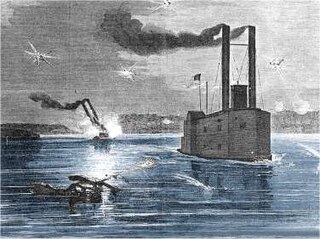
USS Lancaster was a sidewheel civilian steamer tow boat built in 1855 at Cincinnati. It was originally named Lancaster Number 3 then Kosciusko. In March through May 1862, she was purchased and converted to a ram by Colonel Charles Ellet Jr. to serve during the American Civil War as part of the United States Ram Fleet and the Mississippi Marine Brigade.

USS Marmora was a sternwheel steamer that served in the Union Navy from 1862 to 1865, during the American Civil War. Built in 1862 at Monongahela, Pennsylvania, as a civilian vessel, she was purchased for military service on September 17 and converted into a tinclad warship. Commissioned on October 21, the vessel served on the Yazoo River beginning the next month. She encountered Confederate naval mines on the Yazoo on December 11, and was present the next day when the ironclad USS Cairo was sunk by two mines. After further service on the Yazoo during the Battle of Chickasaw Bayou in late December, Marmora was assigned in January 1863 to a fleet that was preparing to operate against Confederate Fort Hindman, but was not present when the fort surrendered on January 11.

USS Baron DeKalb was a City-class ironclad gunboat constructed for the Union Navy by James B. Eads during the American Civil War.
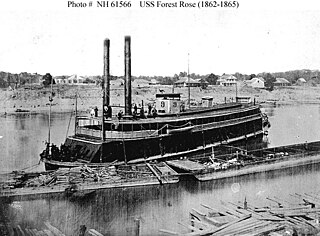
USS Forest Rose was a stern wheel steamer in the United States Navy.

USS General Bragg was a heavy (1,043-ton) steamer captured by Union Navy forces during the American Civil War. She was outfitted as a U.S. Navy gunboat and was assigned to enforce the Union blockade of the waterways of the Confederate States of America.

Built in Brownsville, Pennsylvania, in 1857, the steam ship Lioness was purchased by the War Department and converted to a ram ship for Colonel Charles Ellet, Jr.'s United States Ram Fleet. Commissioned in 1862, Lieutenant Warren D. Crandall in command, she joined the Union Mississippi River Squadron on the western rivers.

The first USS Mingo, a stern-wheel steamer built at California, Pennsylvania, in 1859 and used to tow coal barges, was purchased at Pittsburgh by Colonel Charles Ellet Jr. in April 1862 for usage in the U.S. Ram Fleet during the American Civil War.

The Mississippi Marine Brigade was a Union Army amphibious unit which included the United States Ram Fleet and operated from November 1862 to August 1864 during the American Civil War. The brigade was established to act swiftly against Confederate forces operating near the Mississippi River and its tributaries. The brigade was commanded by Brigadier General Alfred W. Ellet and operated in coordination with the Mississippi River Squadron during the Union brown-water navy battle against the Confederate River Defense Fleet and land based forces. The brigade was independent of the Union Army and Navy and reported directly to the Secretary of War, Edwin M. Stanton. Despite the name, it was never part of the United States Marine Corps.

USS Dick Fulton was a 123-ton stern-wheel steamer used as an auxiliary vessel in the United States Ram Fleet during the American Civil War.

USS Linden was a steamer acquired by the Union Navy during the American Civil War. She was used by the Navy to patrol navigable waterways of the Confederacy to prevent the South from trading with other countries.
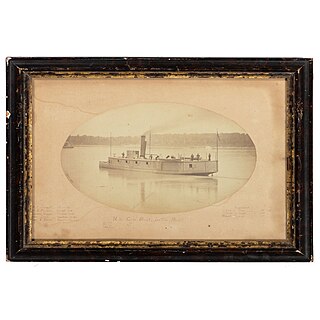
Little Rebel was a cotton-clad ram that had been converted from a Mississippi River steamer to serve as the flagship of the Confederate River Defense Fleet in the American Civil War. Sent from New Orleans to defend against the Federal descent of the Mississippi, she was among the force that engaged vessels of the Union Army's Western Gunboat Flotilla at the Battle of Plum Point Bend on May 10, 1862. On June 6, she again was involved in an action with the Federal gunboats, this time at the Battle of Memphis. In the battle, a shot from a Federal gun pierced her boiler, disabling her, and she was then pushed aground by the Federal ram USS Monarch and captured.
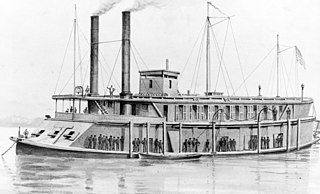
USS Rattler was a steamer acquired by the Union Navy during the American Civil War.
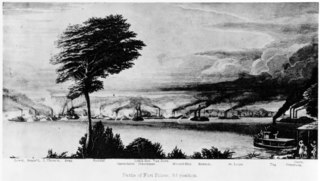
USS Sumter was a 525-ton sidewheel paddle steamer captured by the Union Navy during the Union blockade of the American Civil War.
USS Romeo was a sternwheel steamer that saw service as a tinclad warship during the American Civil War. Completed in August 1862 for civilian trade on the Wabash River, she was instead purchased by the Union Navy for military service in October. Commissioned in December, she cleared naval mines on the Yazoo River later that month before participating in the operations against Confederate-held Fort Hindman in January 1863. After the fall of Fort Hindman, Romeo was part of an expedition up the White River. In February and March 1863, she was part of the Yazoo Pass Expedition, and she fought with Confederates at river landings later in the year to help isolate Vicksburg, Mississippi, during the Vicksburg campaign.